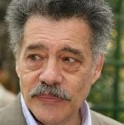EXTRA HUNGARIAM – ON THE INTELLECTUAL LIFE OF THE HUNGARIAN EXILES AFTER 1956
Extra Hungariam non est vita, si est vita, non est ita – stated a Hungarian scholar three hundred and fifty years ago in a Latin dissertation. The much-quoted sentence has been interpreted in more than one way. Ardent patriots maintain that outside Hungary there is no life whatsoever, just as there is no life (perhaps) on Mars. Others would translate these words differently: “All right, there is no life outside Hungary, but if there is some kind of life there, it is

